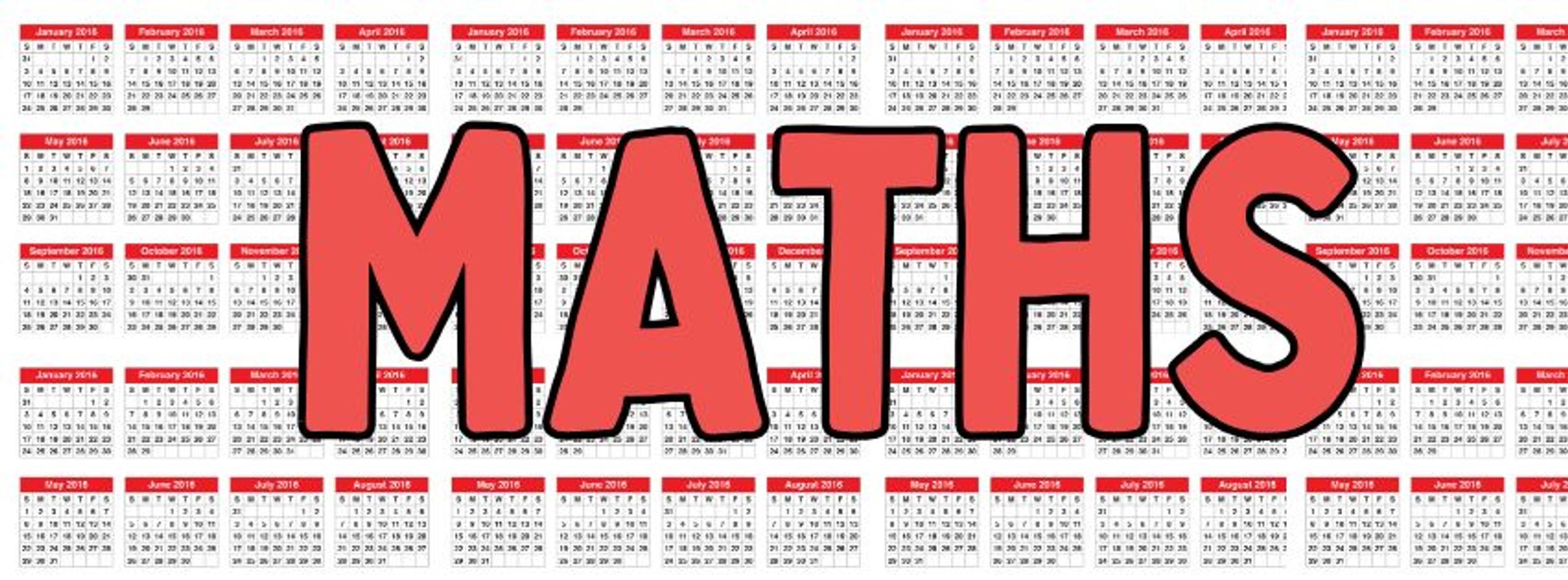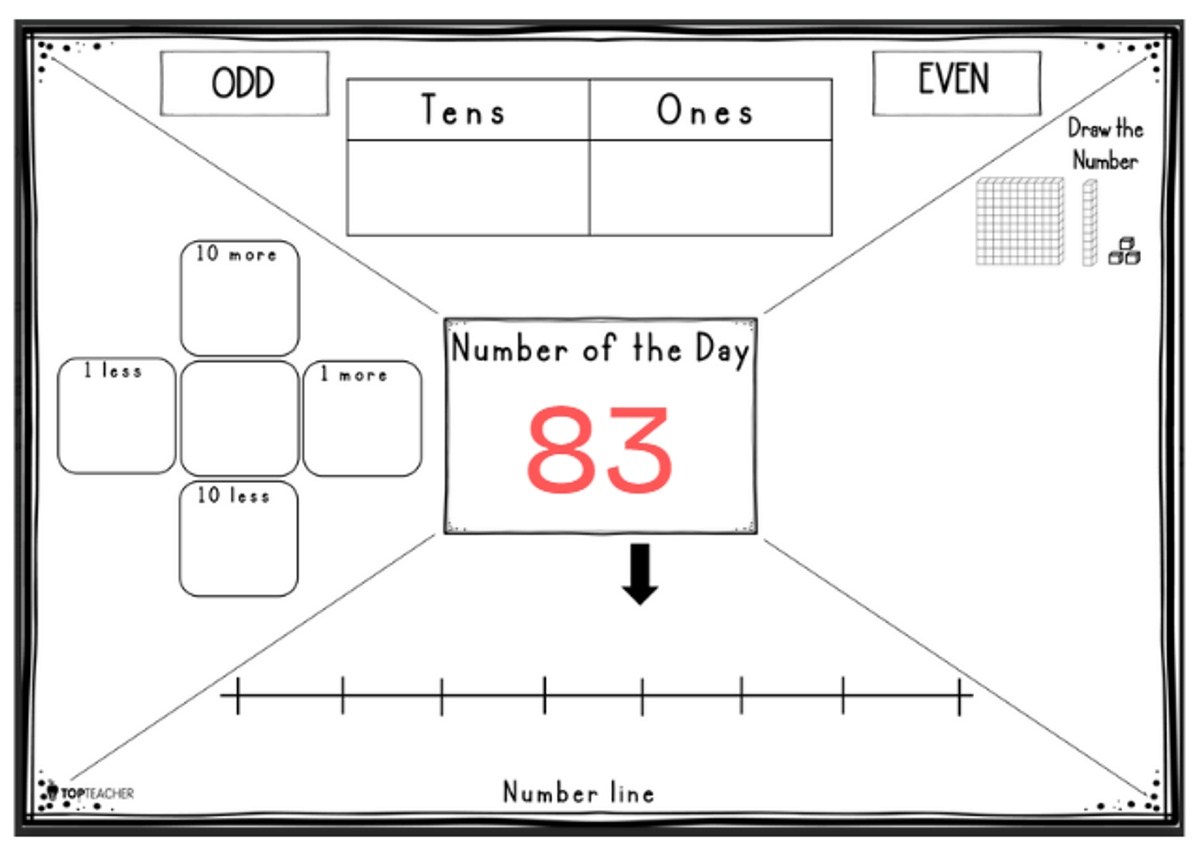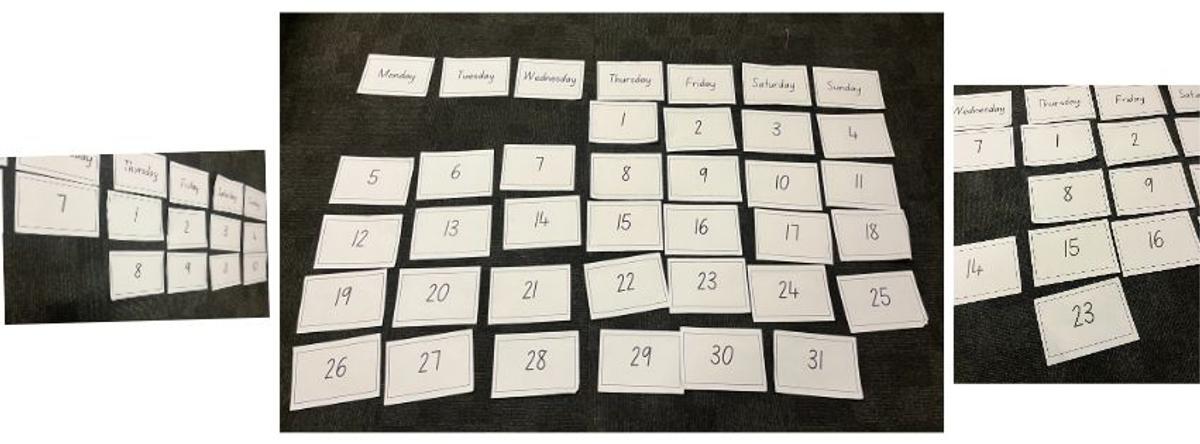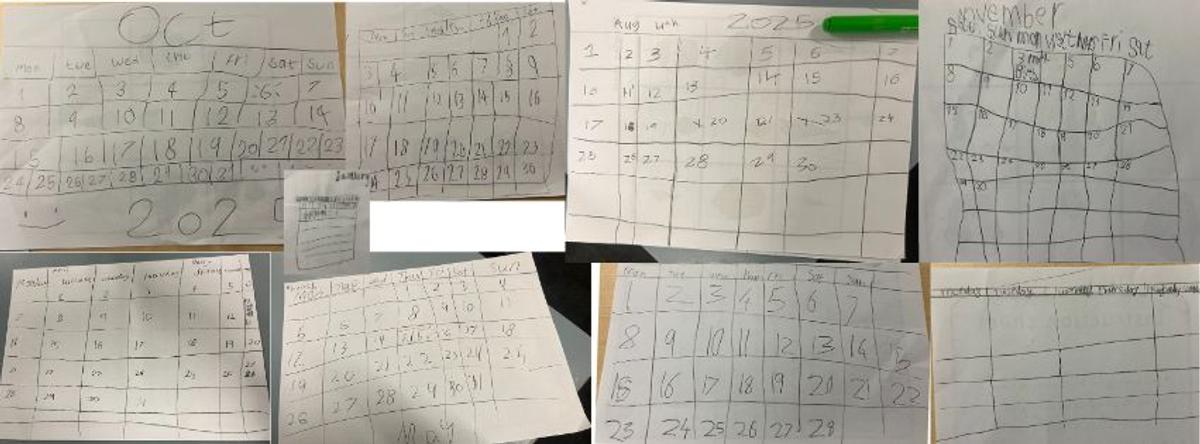Year 2 Bulletin

Learning Overview
Essentially, our task, as a class, was for students to collectively build a calendar on the floor, from appropriate number and word cards, showing accurate day and date sequencing.
We explored how calendars are structured and sequenced, and how days and months are arranged within a month. Students were asked to collaborate and justify their thinking in the placement of their cards.
Teaching Points
- Create a calendar showing accurate day and date sequencing.
- Recognise that months can start on different days of the week.
- Identify patterns in calendar structures (e.g., increasing by 7 down columns).
- Explain and justify their thinking using evidence from their work.
Fluency
We begin each maths session with a short fluency warm-up. For 5 minutes, students practise important number skills to get their brains ready for learning. Once a week, we use Think Boards to explore number, place value, and different ways to solve addition and subtraction problems. These quick activities help build confidence and support students to consolidate basic number facts maths strategies.
Learning Intention
To understand the structure and function of calendars
Whole
To begin with, we came together to break down the meaning of our Learning Intention. We asked the students to consider what the structure and function of calendars is.
All the cards were handed out equally. So each student would have multiple cards.
The initial instruction was that we were going to create a calendar showing the month of July. All we knew was that the 7th was a Wednesday.
So students were asked, whoever had the Wednesday card and the 7th card, to put them down on the floor, where they thought they belonged. Other students were asked if they thought they knew where their card should go.
After they placed their card, they were asked to justify their decision to the rest of the class.
Ten more students were invited to add their cards to the calendar, then smaller groups placed the remaining cards.
Our discussion during this activity included the questions:
- How did you figure out where to place your card?
- What helped you to know?
- What reasoning did you use?
- What patterns could you see emerging, as others placed their cards?
- What mathematical sequences were obvious?
- What understandings were important?
- What did you notice about the numbers down the columns?
- How about the numbers going across in rows?
- What happens when you move diagonally?
All explanations and observations were encouraged.
Some responses were:
- “They increase by 7 down a column”
- “They go up by 6 or 8 diagonally.”
Small
We posed the challenge: “Create a calendar for your birthday month, or the month of May.”
Using a blank sheet of paper, students considered how to start. Some decided on boxes, others ruling or drawing lines for columns and rows.
Other considerations were whether to start the week on a Monday or Sunday.
Questions asked by the students were:
“How many days are in this month?”
“What day was the first of the month?”
Students were prompted to look at the Months of the Year anchor chart, class birthday graph and the Months of the Year rhyme.
Whole
We came together again, to check in on how people were representing their data.
We asked: What fact or facts helped us know where to begin, and how we could build on that?
Learning at Home
- Hang a calendar in a prominent position and reference it when planning family events and extra-curricular activities
- Talk about the number of days or weeks between events
- Notice and discuss different calendars
- Check the day of the week that they start on. Do they start the week on a Monday or a Sunday? What do you prefer?
- Use a daily or weekly schedule to organise your time as a family
- Track upcoming events, such as family birthdays, sports events and excursions on the calendar, to help children to see its value and purpose
Activities to actively use the calendar include:
- 'The end of the month is…'
- 'The first day of the month is…'
- 'Count down to…' (end of term, someone’s birthday, end of the month)
- 'Which day is …' (our excursion, house sports)
- 'Two weeks ago, it was…'
- 'In 4 days, it will be …'
- 'How many weeks until…' (our next public holiday, school production)
- 'How many weeks in a term?'
- 'How long are our school holidays?'
Jocelyn and Steph
Year 2 Team



